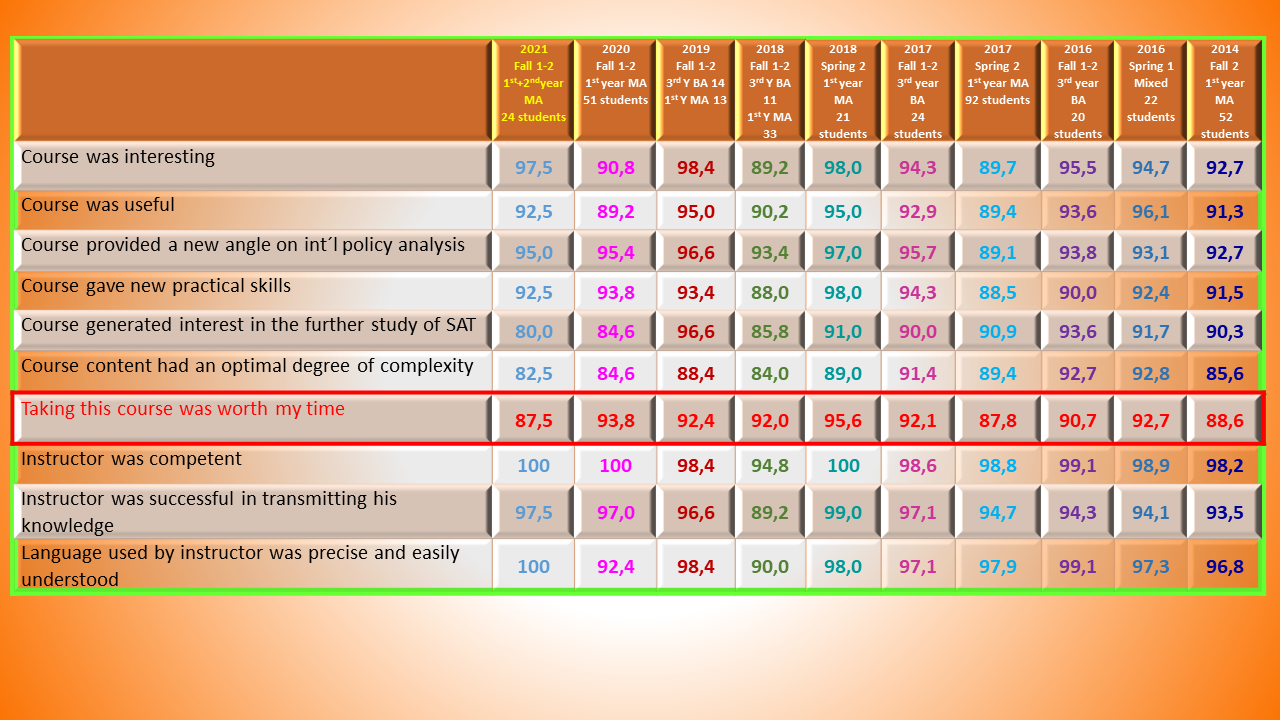Here is what makes our approach to analytic education different.
 We raise our students on raw bear-meat, studying real-life politics. Our case studies describe real actors and real events. Homework projects deal with real issues.
We raise our students on raw bear-meat, studying real-life politics. Our case studies describe real actors and real events. Homework projects deal with real issues.
Policy analysis and strategic threat assessment can be unsettling as it deals with disturbing motives and controversial actions. Regardless, we do not believe there is any benefit in hiding the harsh reality from students by constructing bland proxy actors that pretend conducting invented strategies in thought up situations.
A unique feature of our method is emphasis on teamwork. Structured Analytic Techniques are facilitators of collaboration among analysts. Students in our course experience drinking collaboration from the hose.
All three home projects during the course are team projects. While typical university courses focus on individual learning and reward individual accomplishment, our students are taught the importance and the power of working in a group, in pursuit of a common objective. Contemporary analytic work is precisely that – a team act built around group commitment and collaboration.
Teamwork is a quick and ruthless teacher of discipline and responsibility.
Those students who intend to take it easy and enjoy the ride without breaking a sweat will promptly realize that a falling out with their team will inevitably have dramatic consequences for their chances to complete coursework and get a good grade.
We do not do any hand-holding nor interfere in team workings. Our courses are consciously styled after the conditions of the real world where the only thing important to the client is the timely delivery of an actionable analytic product. Stress levels on our courses tend to be high. We feel stress is good, because future analysts need to learn how to function under duress.
Last but not least, we also teach students both risk-taking and accountability. The analytic profession is unthinkable without the willingness and the ability to go out on a limb. Our analytic education reflects this reality.
To become an analyst, one has got to have guts, this profession is not for faint-hearted. However, it equally shuns reckless and impulsive risk-happiness. The fine balance between risk and responsibility can be learned only through practice. And practice we provide aplenty – completing course project work demands from a good student some estimated 50 hours.






 We raise our students on raw bear-meat, studying real-life politics. Our case studies describe real actors and real events.
We raise our students on raw bear-meat, studying real-life politics. Our case studies describe real actors and real events. 
